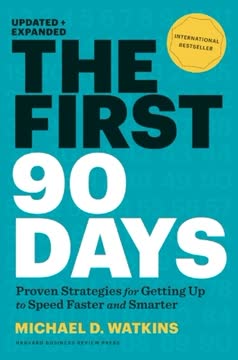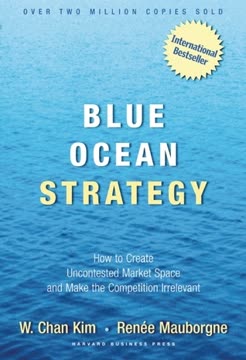Key Takeaways
1. Content Experience: The New Frontier in Marketing
If you're not going to use the content you produce, then f#ck content marketing.
Content experience is the future. It's not just about creating great content anymore; it's about how that content is presented, structured, and delivered to your audience. Content experience considers the environment in which your content lives, how it's organized, and how it compels your prospects and customers to engage with your company. This shift in focus is crucial because:
- Traditional content marketing often results in unused content (60-70% goes unused)
- Buyers expect personalized, Netflix-like experiences in B2B environments
- A well-designed content experience can yield conversion rates 400% greater than those without UX consideration
To create an effective content experience, marketers must think beyond content creation and focus on the entire journey a prospect takes when interacting with their brand's content.
2. The Content Experience Framework: Centralize, Organize, Personalize, Distribute, Generate Results
The Content Experience Framework is focused on how to personalize content experiences at scale.
The framework has five key steps:
- Centralize: Bring all your content assets into one place
- Organize: Tag and structure content for easy discoverability
- Personalize: Create tailored experiences for different audiences
- Distribute: Share content across various channels effectively
- Generate Results: Track and measure the impact of your content
This framework helps marketers:
- Maximize the use of existing content
- Create more engaging and personalized experiences
- Improve content discoverability and relevance
- Measure and optimize content performance
By following these steps, marketers can transform their content strategy from a focus on creation to a focus on experience, leading to better engagement and conversion rates.
3. Personalizing Content Experiences at Scale
Spotify has taken personalization to the next level.
Personalization is key to engagement. Modern consumers expect highly tailored experiences, and B2B buyers are no exception. To personalize content experiences at scale:
- Use AI and machine learning to recommend relevant content
- Create content streams tailored to specific personas, industries, or accounts
- Implement dynamic content that adapts based on user behavior and preferences
- Leverage data to understand and predict user needs and interests
Examples of effective personalization:
- Spotify's "Made For You" playlists
- Netflix's personalized recommendations
- Amazon's product suggestions
By focusing on personalization, marketers can create more engaging experiences that guide prospects through the buyer's journey more effectively.
4. Aligning Content Experience with Go-to-Market Strategies
No matter your go-to-market strategy, executing it requires not only great content, but also a great content experience to match.
Content experience supports various strategies. Whether you're focusing on inbound marketing, demand generation, account-based marketing (ABM), or sales enablement, a well-designed content experience can enhance your efforts:
- Inbound: Create contextual streams of content to guide visitors through their journey
- Demand Generation: Build personalized nurture campaigns with relevant content collections
- ABM: Develop account-specific content hubs with tailored messaging and assets
- Sales Enablement: Arm sales teams with easily accessible, relevant content for prospects
Examples:
- Alight's persona-specific content streams for HR solutions
- Blackbaud's industry-tailored content experiences
- Snowflake's account-specific microsites for ABM
By aligning content experience with go-to-market strategies, marketers can create more cohesive and effective campaigns that drive better results.
5. Overcoming Common Content Marketing Pitfalls
We can't expect them to go back to find that next perfect asset. Remember, it's more likely they'll go back to the medium's infinite scroll.
Avoid these common mistakes:
- Greeting with latest vs. greatest content
- Organizing content by format instead of topic or persona
- Ignoring user experience in content presentation
- Passing the buck on content experience ownership
To overcome these pitfalls:
- Focus on relevance over recency when presenting content
- Organize content based on user needs and interests
- Prioritize user experience in content design and delivery
- Establish clear ownership of the content experience within your organization
By addressing these issues, marketers can create more effective content experiences that keep prospects engaged and moving through the buyer's journey.
6. The Role of AI and Technology in Content Experience
AI will help you personalize and scale your content.
Leverage technology for better experiences. AI and other technologies play a crucial role in creating and optimizing content experiences:
- Content recommendation engines
- Personalization algorithms
- Analytics and tracking tools
- Content experience platforms (CEPs)
Benefits of using technology:
- Scale personalization efforts
- Improve content discoverability
- Optimize user journeys based on data
- Measure and attribute content performance more accurately
By embracing AI and other technologies, marketers can create more sophisticated and effective content experiences that drive better results.
7. Organizational Alignment for Effective Content Experience
Everyone in your organization is responsible for the content experience because everyone in your organization creates and uses content.
Content experience is a team effort. To create a cohesive content experience, organizations must align various departments and roles:
- Marketing: Content creators, digital marketers, designers, demand generation
- Sales: Pre-sale and post-sale teams
- Customer Success: Onboarding and support teams
- Leadership: Executives and decision-makers
Key alignment strategies:
- Establish clear communication channels between departments
- Create shared content repositories and guidelines
- Implement consistent messaging and branding across touchpoints
- Provide training on content experience best practices
By fostering organizational alignment, companies can create more consistent and effective content experiences throughout the entire customer journey.
8. The Content Experience Manager: A New Crucial Role
We knew we needed someone who could provide the depth of knowledge and thought leadership to ensure our content experience ran smoothly from end to end—and more importantly, that their efforts would directly correlate with positive revenue.
A dedicated role for content experience. The Content Experience Manager is responsible for:
- Managing end-to-end, omnichannel content experiences
- Facilitating communication between marketing, sales, and other departments
- Identifying the right assets for different stages of the buyer's journey
- Optimizing content experiences for maximum engagement and conversion
Key responsibilities:
- Content strategy and planning
- Experience design and optimization
- Cross-functional collaboration
- Performance measurement and reporting
By creating this dedicated role, organizations can ensure that content experience receives the focus and resources it needs to drive meaningful results.
Last updated:
Review Summary
F#ck Content Marketing challenges traditional content marketing approaches, emphasizing the importance of content experience over quantity. Readers appreciate its focus on personalization, organization, and distribution of content to engage customers effectively. The book's framework for creating immersive content experiences is praised, though some find it difficult to implement. While most reviewers find valuable insights, a few criticize it as a sales pitch or unhelpful. Overall, the book is seen as thought-provoking and useful for marketers seeking to improve their content strategy and customer engagement.
Similar Books










Download PDF
Download EPUB
.epub digital book format is ideal for reading ebooks on phones, tablets, and e-readers.




